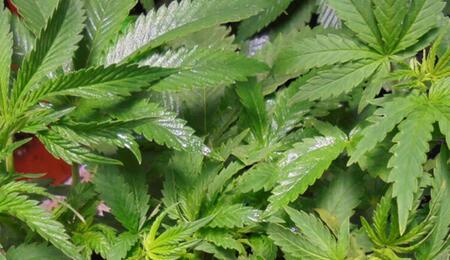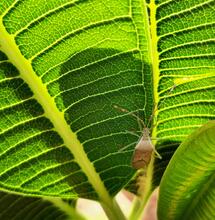The Facts To Know About Indica And Sativa

These two names Indica and Sativa are very well known as covering the very basics when describing a variety of cannabis. A real smoker can often tell how well versed a person is depending on how often they reference the words Indica or Sativa, when describing different flowers and especially when describing the effects.
It can be frustrating many times as there is much more to these varieties of cannabis and below is better explained the differences between Indica cannabis and Sativa cannabis, to help better understand what strain you may be smoking next time you a passed a joint.
Indica Cannabis Explained:
As somebody new to smoking or growing cannabis, understanding what the differences are between these two varieties can be easily go wrong. Experienced growers can spot two plants apart from a far distance just by noticing the characteristics and the Indica variety of cannabis is certainly one half of that vast scale. Indica cannabis will grow short to medium height and will flower with little internodal spacing, which usually means short flowering times of 50 to 60 days. The leaf size of an Indica leaf will be short and wide and thick, sometimes overshadowing new growth under the fan leaves of Indicas. When an Indica variety does flower it will produce small compact buds between every internode, however will not appear like the foot long banana style buds that you may see in magazines. The buds will be dense and a characteristic of the buds are they will be easy to trim and when dry should shrink down to a firm 1-2 inch hard nug. The overall yields of Indicas are limited to growing strong side branched small colas yet as they are ideal for certain set ups as sea of green, a grower can expect to flower their Indica plants and grow more buds in less time than Sativa varieties. The aroma of an Indica due to the origin of the Indica landraces that have been successfully backcrossed to present reliability and the original vigour, are some what earthy and pungent. There can also be a spice which many smokers prefer not to enjoy. Now days many Indicas have been crossed to enhance a more desirable flavour than the gas like earthy old school Afghan’s and liquorice flavoured Black Domina lines. Indica cannabis will be more durable in colder climates than Sativa strains, so growing Indica based varieties in countries with poor summers can help the plant finish and produce good buds. Indica cannabis can also enjoy a heavy feeding and not show much deficiency and over all are considered the most versatile of the two varieties.
History Of The Indica:
The source of the full blooded Indicas strains that are used today for many strains, were originally taken in the late 1980’s from the Himalayas and taken back to Amsterdam to be worked on and back crossed. Sensi seeds were the original pioneers to commercially make this venture and as a result have a stabilized line of the original Indica landraces available in their catalogue. Strains were taken from the Hindu Kush mountains and Afghan and Pakistan, so these earthy nepalese hash tasting strains really represent the true Indica. As Indica strains were strong sturdy plants, breeders wanted to create strains that possessed the reliability and pedigree of the Indica but wanted to improve the flavour and also the yield. Some examples of true Indica strains are Afghan #1, Grand daddy Purps, Bubba Kush, Northern lights, Blue Cheese, Purple Kush, Blueberry, Master Kush, Afghan Kush, L.A Confidential, G13, Sky Walker Kush, White Berry, Hindu Kush, Romulan, Orange Kush, Lavender, Kosher Kush, Sensi Star, Sweet Tooth, MK Ultra, Hash Plant, Vanilla Kush and Mango.
The High And The Effects:
If you are smoking Indica for the first time a good rule of thumb is to know ‘ Sativa will keep you chatting and Indica will stop you talking ‘. The effects of a true blooded Indica can be devastating and overpowering. The high can be instant and there can be feelings of heaviness and couch louch. You can experience heavy eyes and dry mouth as well as a huge boost in appetite, which will not enhance energy levels so much. The cerebral effects of Indica cannabis can be very relaxing also and not racey and long lasting as pure Sativa strains can be. The taste of a ground up bud will be somewhat pungent and sharp and in many cases fruity. Indica buds when being burnt in a joint will have a strong dankness to them and will fill the air with a thick musky sour smoke similar to Cheese, Blue cheese or a high grade stinking O.G Kush. When eaten as an edible, the effects can be much longer lasting with a narcotic similarity. As far as bag appeal is concerned, Indica buds will appear small and dense and may appear you did not get as much as the Sativa strain weight wise. A gram of high grade Indica Kush in Amsterdam or California does not go very far or last very long but due to the moorish quality these buds have, you will find yourself wanting more and more. At one time Indica strains would contain around 15-18% THC and a CBD of 0.2, however now days some of the Kush strains have been tested at over 30% putting Indica strains on par with those racey powerful Sativa strains.
Medicinal Use: Low In THC and High In CBD/CBN
Used recreationally can be one side of enjoying the narcotic properties of the Indica, yet when used for medicinal reasons dispensaries in America find that for pain relief, inflammation, muscle spasms, nerve damage, aiding sleep and rest, arthritis, anxiety, back pain, Multiple Sclerosis and cancer patients, Indica cannabis really helps alleviate these problems. Cannabis oil and extracts have proven to be extremely effective when eaten, especially when controlling pain levels in a person who is suffering somehow. Medical patients in the states can now be well advised by the dispensaries which strain will be a solution for that specific problem they are experiencing, so can take full benefit of the 30 years and more of research and development of Indica strains today.
Sativa Cannabis Explained:
Sativa strains of cannabis gave hope to those who desired more fruity sharp zest flavours with a racing energetic high to follow. Not only did this variety of cannabis yield more than the Indica and grow branch long buds, it allowed the smoker to enjoy a strain that could be smoked from morning until night and not be totally couch locked or demotivated. Sativas will grow tall and profusely with multiple side branching that grows as tall as the main tops. Similar to the christmas tree structure of the small squat Indica, however a much taller version with long serrated thin fingered fan leaves. The size of the plants can grow upto 150cm to 200cm, with an aroma that is fruit punch, tropical, sharp and zest, citrus and alert. The bud structure of a flowering Sativa cannabis plant will be taller and thin in comparison to the small dense round like nugs off the Indica plant, with many more leaves growing out of the new flower sets. It may be harder to trim or at least the calyx to leaf ratio is much higher with Sativa strains. Flowering time will be between 77 days and 90 days for a true Sativa to swell up and be ready for a harvest. Some of the original land races such as Mekong Haze have taken up to 14 weeks to finish flowering. Sativa strains will always produce more than Indica strains due to the longevity of the flowering time and doe to the bud structure being more elongated and taller calyx development.
History Of The Sativa:
Due to the nature of Sativa strains, they require tropical weather and are found in part of the world that have long hot days. Some Sativa strains actually respond differently to a 12/12 flowering period to Indicas and can often hermaphrodite as these are not the light conditions they receive when growing in their own country. The first Sativas were grown out in countries such as Mexico, Brazil, Hawaii, Asia, Jamaica and sides of the equator that are classed as tropical to some degree. American breeders were first introduced to the fruity energetic large yielding Sativa when the ‘ Haze Brothers ‘ from California took some seeds from Amsterdam back to the states. Before that who actually discovered the original hazes and crossed them is not so easy but I expect Shanti Baba and his colleagues had something to do with it. Some examples of pure Sativa strains are Silver Haze, Sour Diesel, Hawaii Maui Wowie, Strawberry Cough, Chocolope, Amnesia Haze, Super Lemon Haze, Purple Haze, Tangie, Grate Fruit, Moby Dick, Casey Jones, Super Silver Sour Diesel Haze, Power Plant, Kali Mist, Sage N Sour, Hawaiian Snow, Mango Haze and Cannalope Haze.
The High And The Effects:
A Sativa strain can pull you out of a sleep Indica slump and revive you with a much needed energetic clarity and social boost. Sativa strains are great for being active and stimulation. Almost the complete opposite of Indica strains, a Sativa high can last for upto 5-6 hours, as well as being considered the racey and more fast paced high compared to the Indica effects. Smokers will enjoy an extreme increase in appetite and there will be no heaviness or burning of the eyes. Infact Sativas will increase creativity and thought process much more than Indica strains and this is due to them being well noted for high levels of THC. Dry cannabis buds taken from a Sativa will appear larger in size and offer more in terms of size and weight than Indica buds. The aroma of a ground up Sativa bud will be sharp and zesty with a background of mango and lemons and when smoked in a joint the taste is a deeper fruity lemon that can make you sweat a little after a few minutes. In my opinion a good Sativa should get your palms and neck sweating. The THC of a Sativa strain will contain between 19-25% THC so it can be advised to combine the Indica and Sativa throughout the day and night time so you are not totally alert late at night, when you would prefer to be relaxed and take that racey edge off. Some Sativa strains can be so strong in terms of the high, many smokers experience paranoia and discomfort or anxiety, so will often choose Indica over Sativa especially in a social scenario.
Medicinal Use: High In THC and Low In CBD/CBN
Whilst Indica and CBD are commercially known for their pain relieving properties, Sativa cannabis is well known for the benefits of energy and stimulation The uses of Sativa can also increase appetite tremendously as they are so high in THC and are often used with cancer treatments alongside CBD and are used to treat nausea, depression, migraines and cluster headaches and muscle and nerve pain. For pain relief Indica cannabis is the preferred medicine however mixing Indica and Sativa in extraction can allow the medical patient to benefit the most from the entourage effect as all of the other cannabinoids work in harmony.
The Cannabinoids Present In Both:
Delta-9-tetrahydrocannabinol (THC): This is what makes us feel euphoric and happy and is the most well known cannabinoid within the cannabis plant. Tetrahydrocannabivarin (THC): This is a non psychoactive cannabinoid which is found in the cannabis plant Cannabidiol (CBD): Becoming commercially well known, CBD is a anti inflammatory and used to treat seizures and epilepsy. Cannabichromene (CBC): This cannabinoid promotes the sedative effects of THC within the body. Cannabigerol (CBG): Works in conjunction with the other cannabinoids and has sedative effects. Cannabinol (CBN): A mildly psychoactive cannabinoid that is a degrade of THC. By: Stoney Tark



.png)